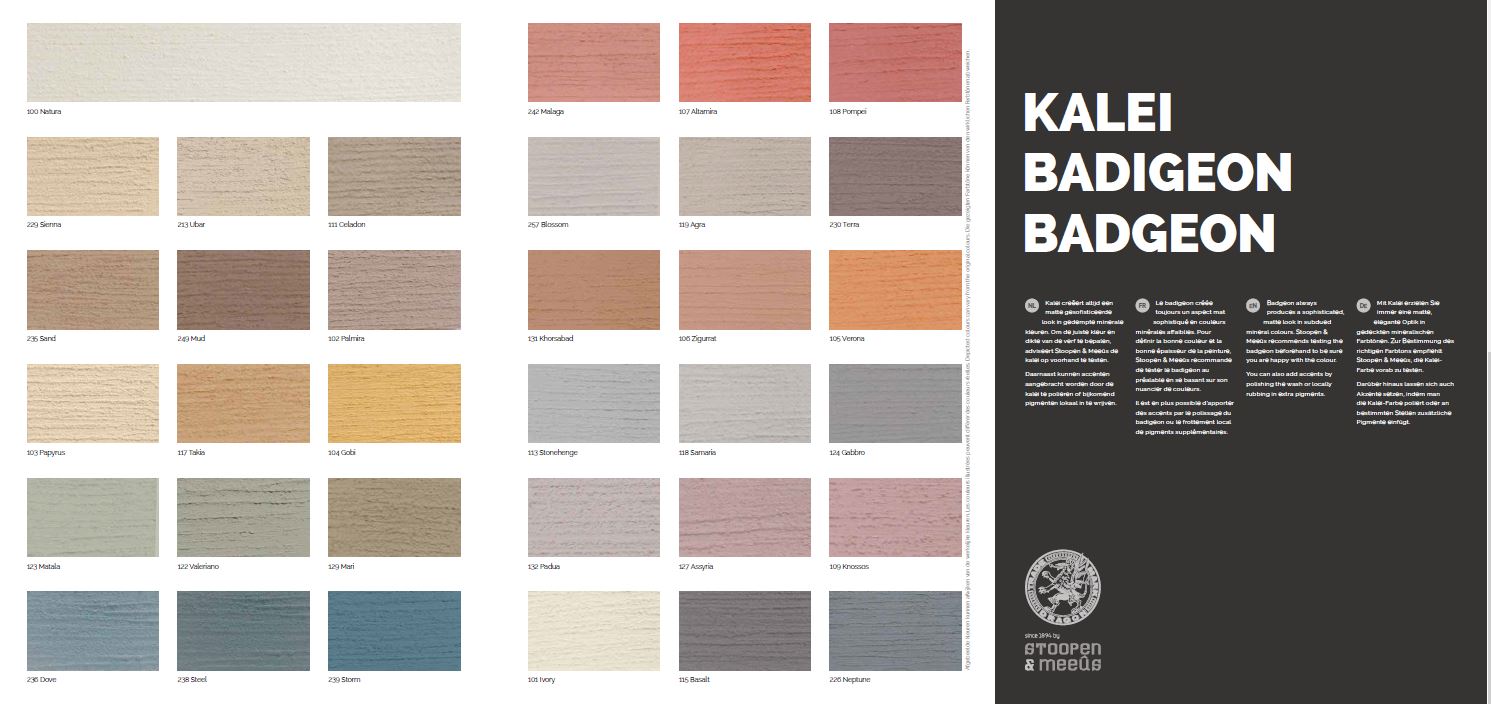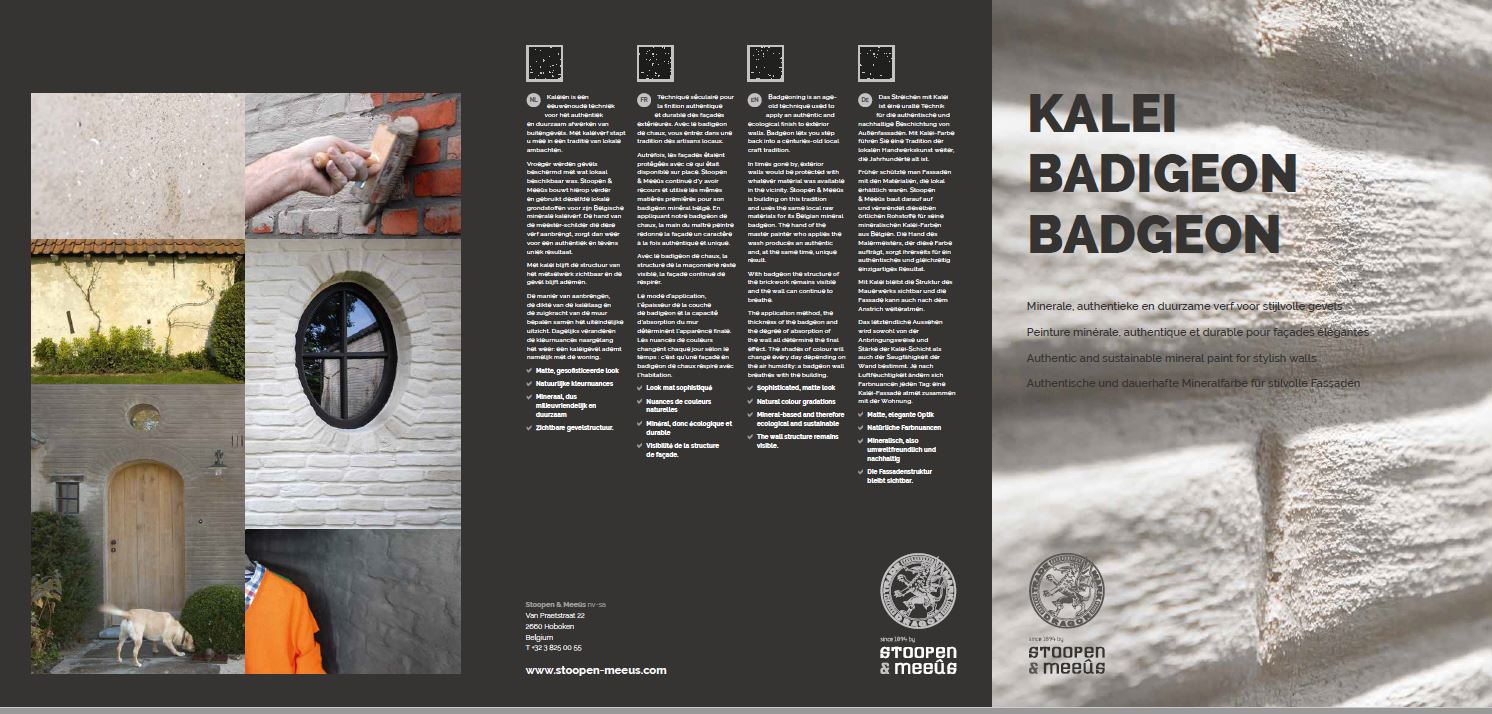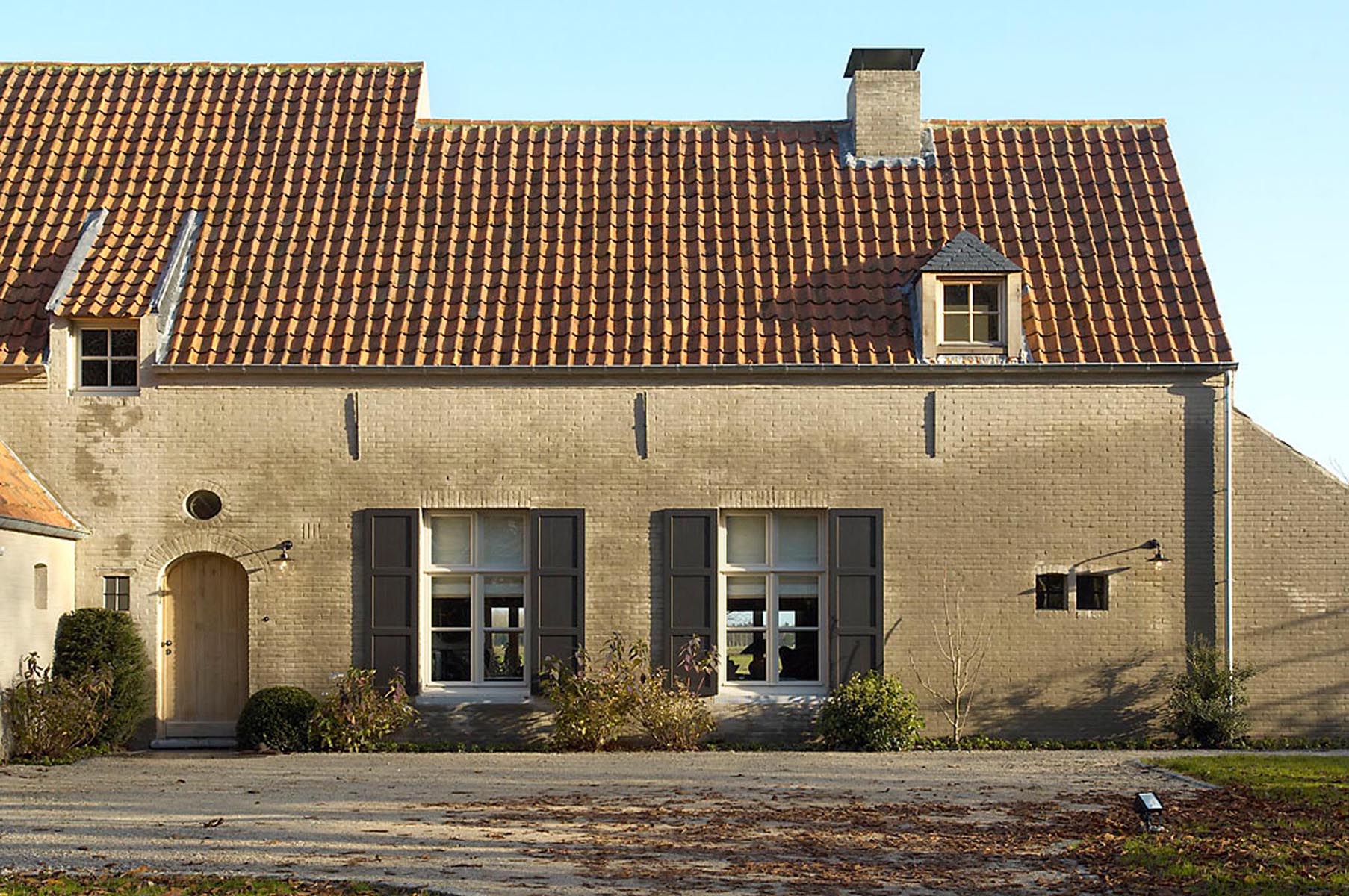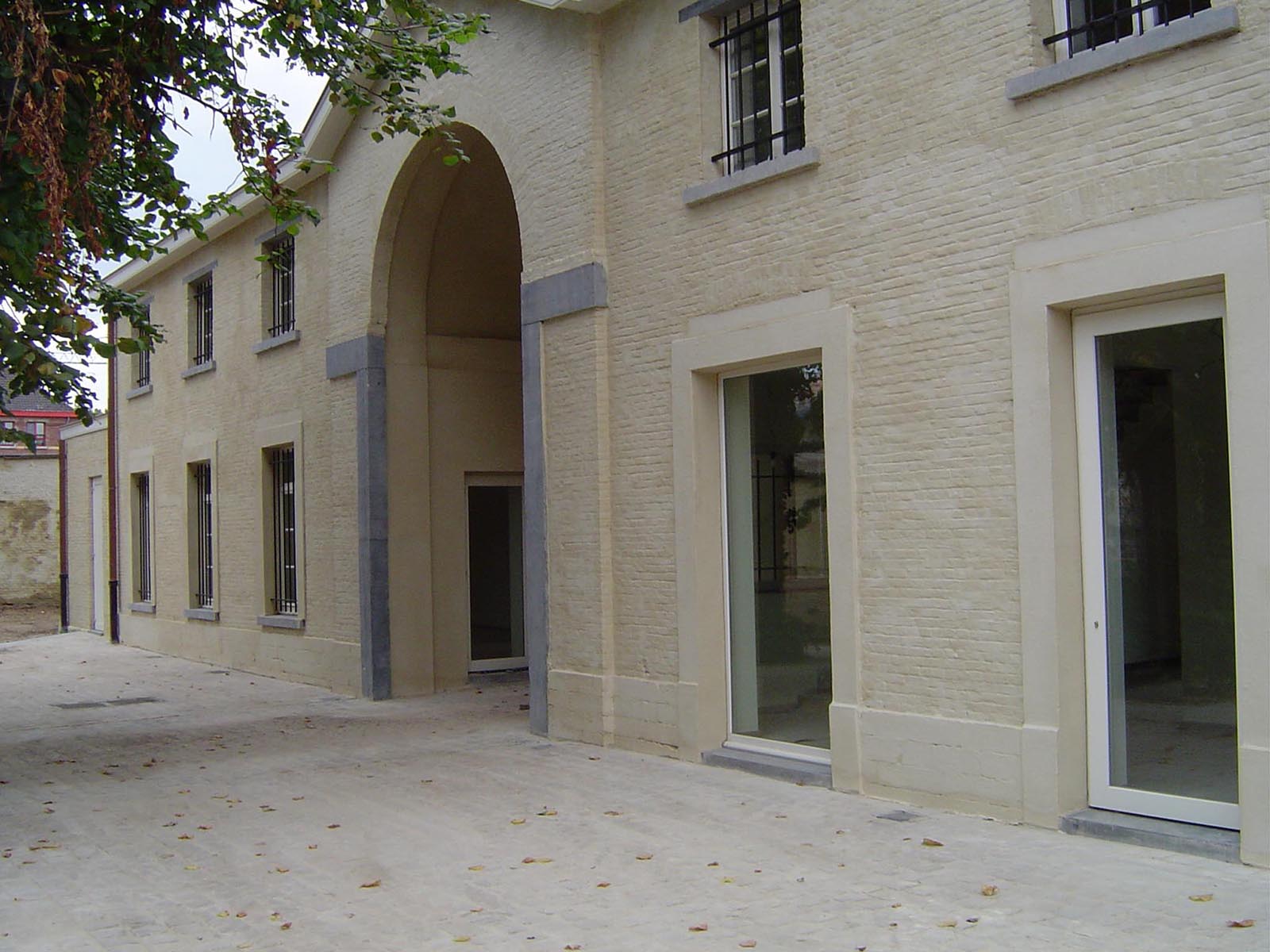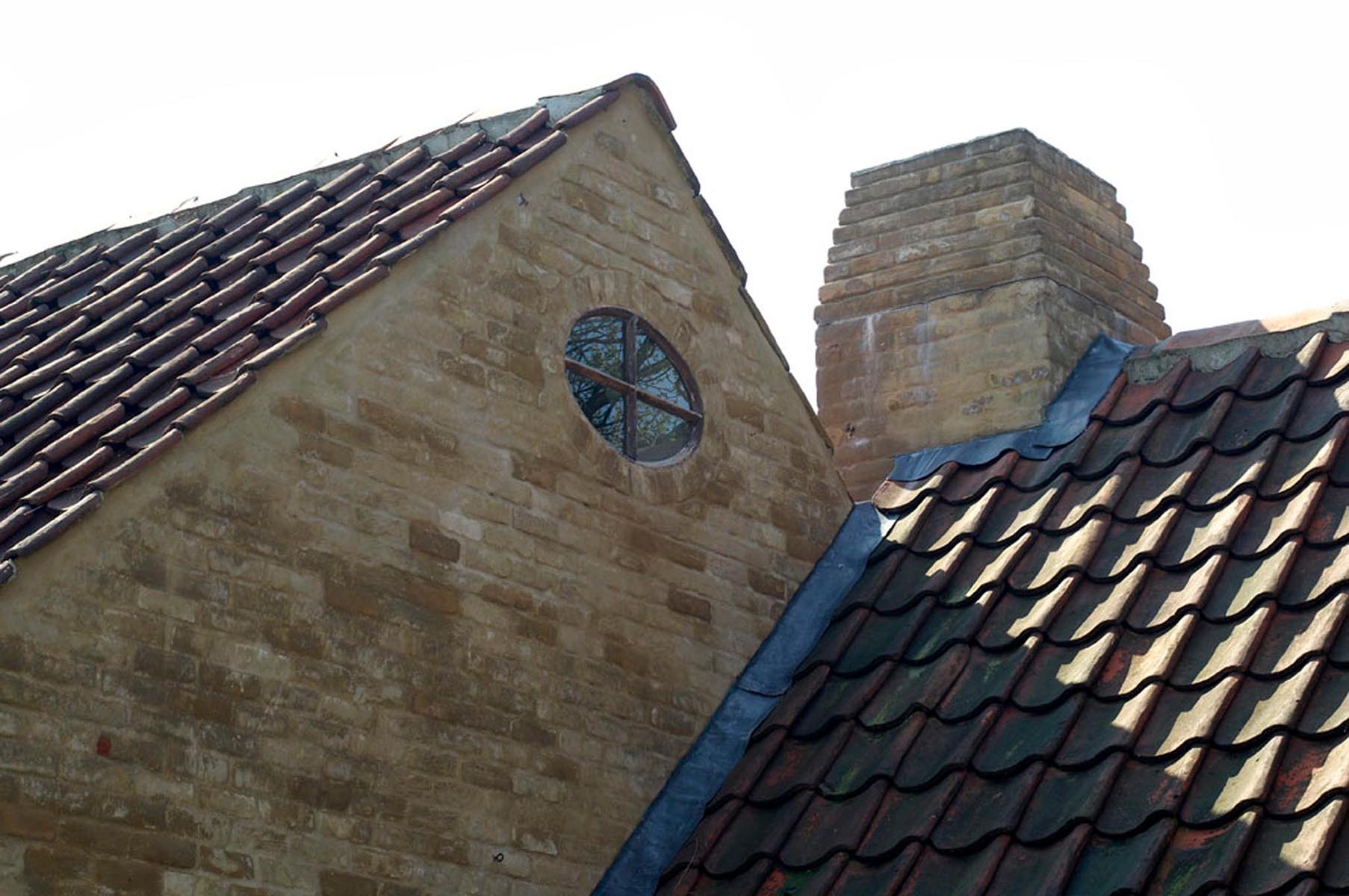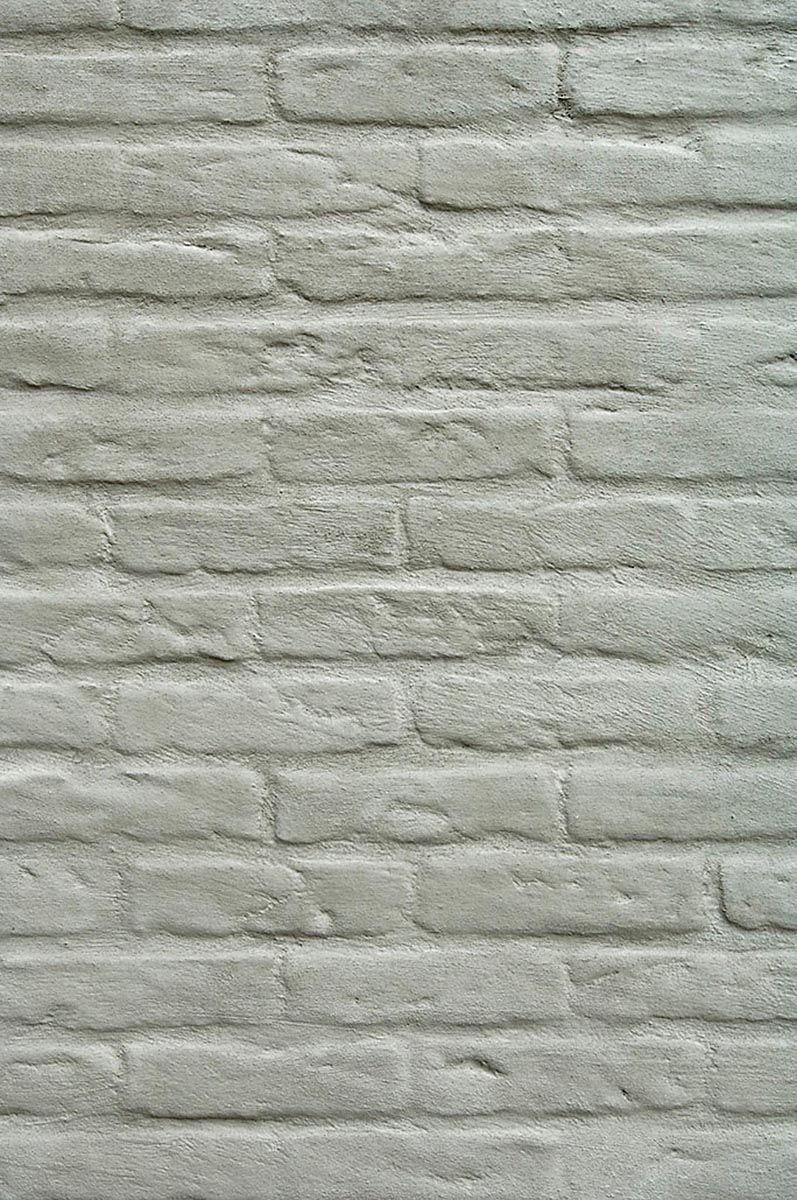BADGEON
Mineral, authentic and durable paint for stylish facades
Mineral, authentic and durable paint for stylish facades
Badgeon is very old technique for the authentic and durable finishing of building facades. Badgeon paint opens the door to the age-old tradition of local crafts.
A matt sophisticated look
Natural colour nuances
Mineral, so environmental-friendly and durable
Visible facade texture
Mineral Badgeon from Stoopen & Meeûs refreshes the appearance of walls while highlighting the texture and masonry.
In the old days, facades were protected with materials that were available locally. Stoopen & Meeûs continue this tradition and use the same local raw materials for their Belgian mineral Badgeon paint. The hand of the master painter who applies the paint creates an authentic and unique result.
Badgeon maintains the texture of the visible masonry and allows the facade to breathe.
The application method, the thickness of the badgeon layer and the absorption power of the wall determine the final appearance. The colour nuances change daily, depending on the weather, because a badgeon facade breathes with the building. When the weather is humid, the badgeon layer absorbs moisture which evaporates again when the weather turns dryer. On the other hand, badgeon allows rising damp or other moisture from the inside the walls to evaporate. This means a badgeon finish also contributes to a healthy living environment indoors.
Indicative colour chart
Composition
Badigeon consists of mineral raw materials with a maximum particle size of 0.75 mm. It also contains cement-free binding agents that maintain the breathing and damp-regulating character of the facade.
Substrates
High-absorbent, rough substrates such as bricks are ideal. Pure concrete and some plasters are also suitable for painting with badgeon. Smooth walls and low-absorbent walls can be painted with badgeon after adding ‘Badgeon Additive’.
Badgeon Additive improves the bonding with the existing paint coat. However, this involves a risk and should only be used in consultation.
Colours
Badgeon always creates a matt, sophisticated look in subdued mineral colours. To determine the correct colour and thickness of the paint, Stoopen & Meeûs recommend that you test the badgeon before applying it.
In addition, certain highlights can be added by polishing the badgeon or rubbing in additional pigments locally.
To find experienced professionals in your neighbourhood click here.
FAQ
Badgeon can be applied to walls affected slightly by rising damp but it must be able to dry out enough to harden.
Slight rising damp will not remove the badgeon from the surface but will pass through the badgeon and evaporate.
However, walls which are saturated by rising damp during the winter period will be damaged in severe frost conditions.
For this reason, it is recommended to solve rising damp problems with damp-proof course or injection before painting.
Badgeon can be applied to very old, damaged facades. Loose joints must be removed in advance but cracks in the joints are not a problem.
If the badgeon has to fill deep joints, it’s important that you let the badgeon dry completely after the first coat. Shrinkage cracks that may be visible after drying can be filled perfectly with the second coat.
Badgeon must be protected against moisture until it is completely dry.
Moisture which is stationary for a long time may cause a white haze (bleeding). This white haze is subsequently dissolved when it rains and disappears.
New masonry always presents a risk for bleeding. Bleeding is caused by salts in bricks or cement which are brought to the surface with moisture. These salts penetrate the badgeon, which is breathable and moisture-permeable, and create a white haze when the water content evaporates.
Block formation can be avoided by:
- Applying the paint haphazardly
- Moistening the facade before painting to apply the paint more easily
- Diluting the second coat so you can apply the paint more easily (painting faster = less block formation)
- Polishing the finish so remove possible block forming.
Badgeon cannot be removed but you can paint over it with classic facade paints once it has hardened (minimum 4 weeks).
The period during which a facade painted with badgeon keeps its appearance depends on the circumstances. A dusty environment, running rainwater or dense vegetation tend to make surfaces painted with badgeon dirty much faster.
Badgeon is a breathable, moisture-regulating and absorbing paint comparable to a mineral plaster.
After a period of time (5-10 years) the badigeon needs to be refreshed with a new coat of badgeon.
Badgeon retains its attractive appearance if a water-repellent product is applied but then the typical aspect of badgeon is lost. You can only paint over it when this hydrophobic product has practically disappeared.
Several factors determine the drying time:
- Climatological conditions
- Layer thickness
- Substrate
- Moistening of the substrate
For this reason, drying time varies from 1/2 to 6 hours. Drying may take several days in the event of mist or rain.
The badgeon is dry when the colour has lightened.
The substrate must:
- Absorb sufficiently, if this is not the case, Badgeon Additive can be applied.
- Dust-freeand grease-free, it is recommended to clean the substrate with a high-pressure cleaner.
- Moss-free.
- Loose jointsmust be removed in advance. Cracks in the joints are not a problem.
A primer or impregnation layer must not be applied because they actually reduce the absorption.
A substrate is high-absorbent if it absorbs the water when moistened and continues to do so for a period of time.
When painting with badgeon, it is important that you moisten the wall first to check whether the substrate is sufficiently absorbent:
- If you pour half a glass of water at a height of 1.5 m on the facade, you shouldn’t see any major dripping. After 5-15 seconds, the glistening of the moisture should disappear and you should only see a dark stain.
- If the substrate is low-absorbent or does not absorb at all, you can add Badgeon Additive. The additive is designed to provide a better adhesion to low-absorbent substrates.
The substrate must be homogeneous, mineral and high-absorbent, and free of dust and grease.
- Non-homogeneous substrates may cause colour differences due to varying absorption. Moistening may improve the uniform absorption of non-homogeneous facades.
- Facades with insufficient absorption (for example, certain facing bricks with low porosity <5%), will not absorb the badgeon sufficiently and this affects the bonding adversely. Bricks with low porosity should not be pre-moistened.
- Facades which in the past were coated with water-repellent products, are not suitable for painting with badgeon.
- Badgeon bonds with slightly damp facades, but must be able to dry out enough to harden.
The absorption degree of the substrate determines the colour of the badgeon. High-absorbent substrates result in darker colours while low-absorbent substrates are lighter. This means that colour nuances are typical of mineral badgeon.
The colour chart is therefore only indicative and it is recommended to paint a sample on the substrate you plan to paint.
You can apply badgeon on top of an existing coat of paint if you use Badgeon Additive and IF
- the coat of paint bonds adequately (due to the weight of the badgeon and its moisture-retaining characteristic, all underlying layers must also bond adequately);
- the existing coat of paint is in good condition;
- loose paint is removed (damaged paint with cracks, etc. lets moisture through more easily after painting with badgeon and this increases the risk of underlying paint loosening faster).
Adhesion of the new layer of badgeon depends entirely on the bonding of the underlying old layers of paint.
Note that badgeon cannot be applied on
- non-alkali-resistant paint,
- lime paint.
If the substrate is low-absorbent or does not absorb at all, you can add Badgeon Additive. The additive is designed to provide a better adhesion to painted substrates. However, adhesion of the new layer of badgeon depends entirely on the bonding of the underlying old layers of paint.
The additive improves the bonding
- with smooth, non-absorbent surfaces;
- with adequately bonding layers of paint of painted substrates (due to the weight of the badigeon and its moisture-retaining characteristic, all underlying layers must also bond adequately);
- with low-absorbent substrates.
Badgeon will however always adhere better to a high-absorbent substrate.
Badgeon Additive does NOT help
- for painted substrates that do not adhere adequately;
- for saturated substrates;
- for substrates coated with water-repellent products (for example, siloxanes, etc.).
The painter is responsible for assessing existing layers of paint. In the event of doubt concerning existing paint, it should be removed. You should consult with the client before deciding otherwise.




